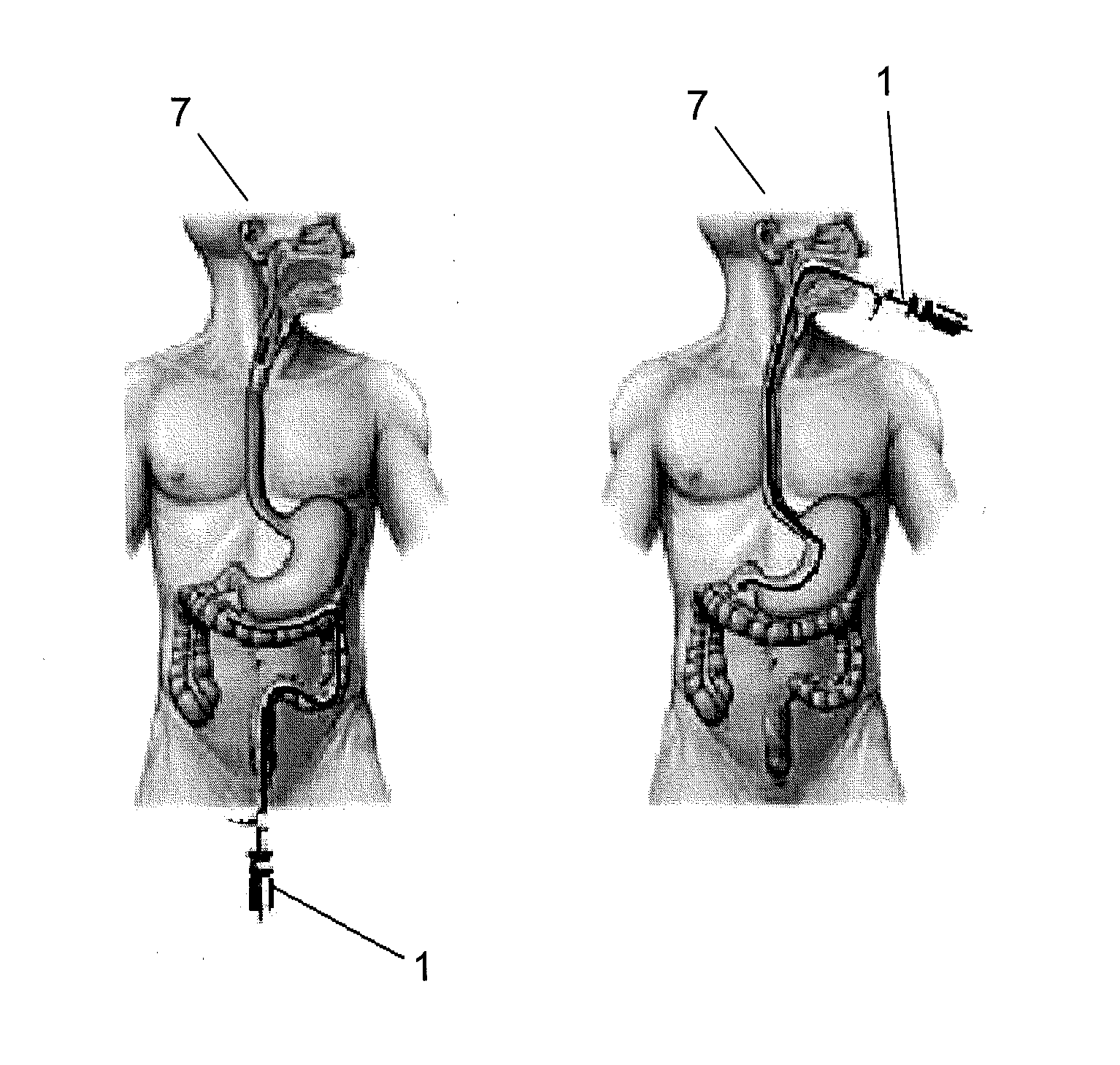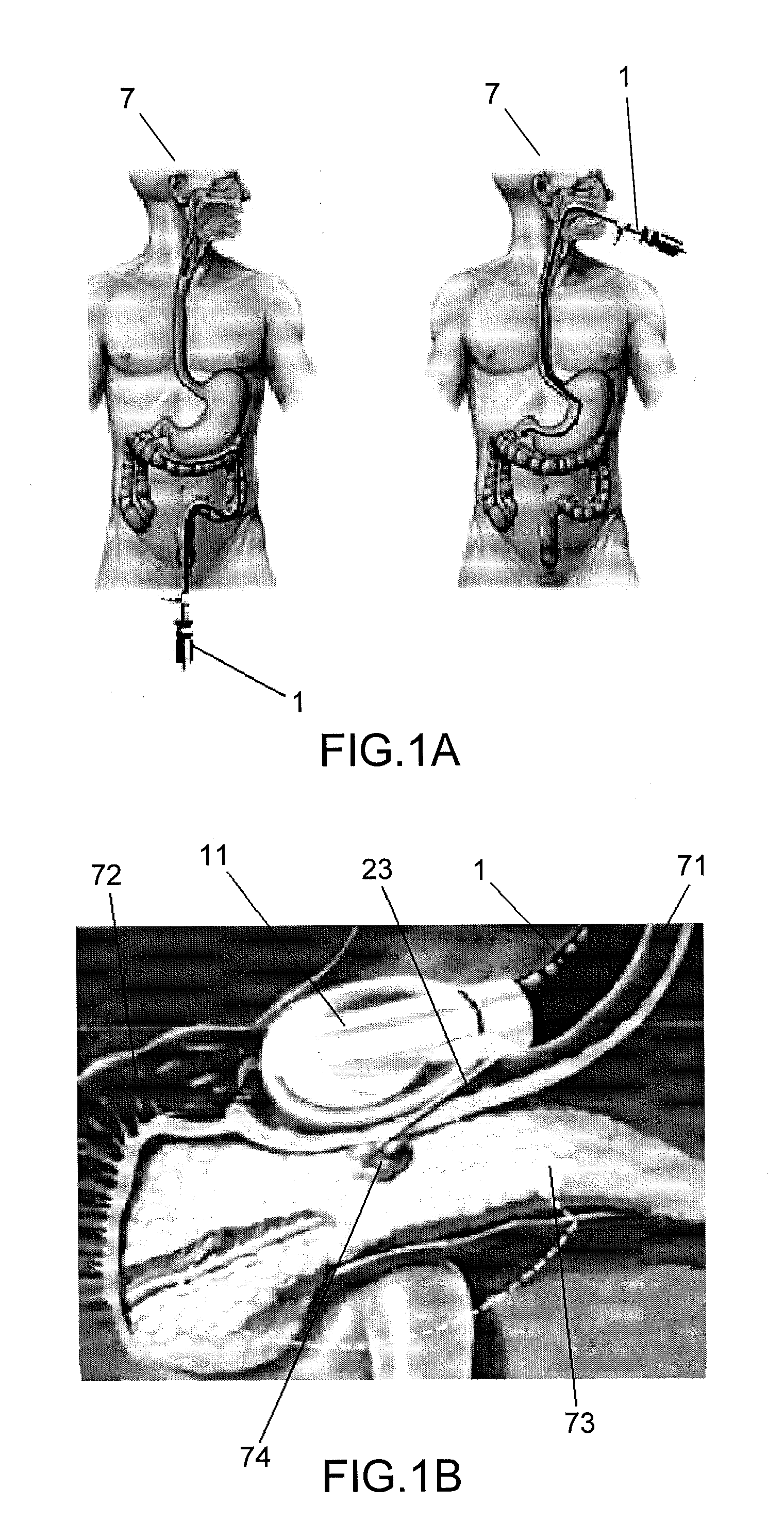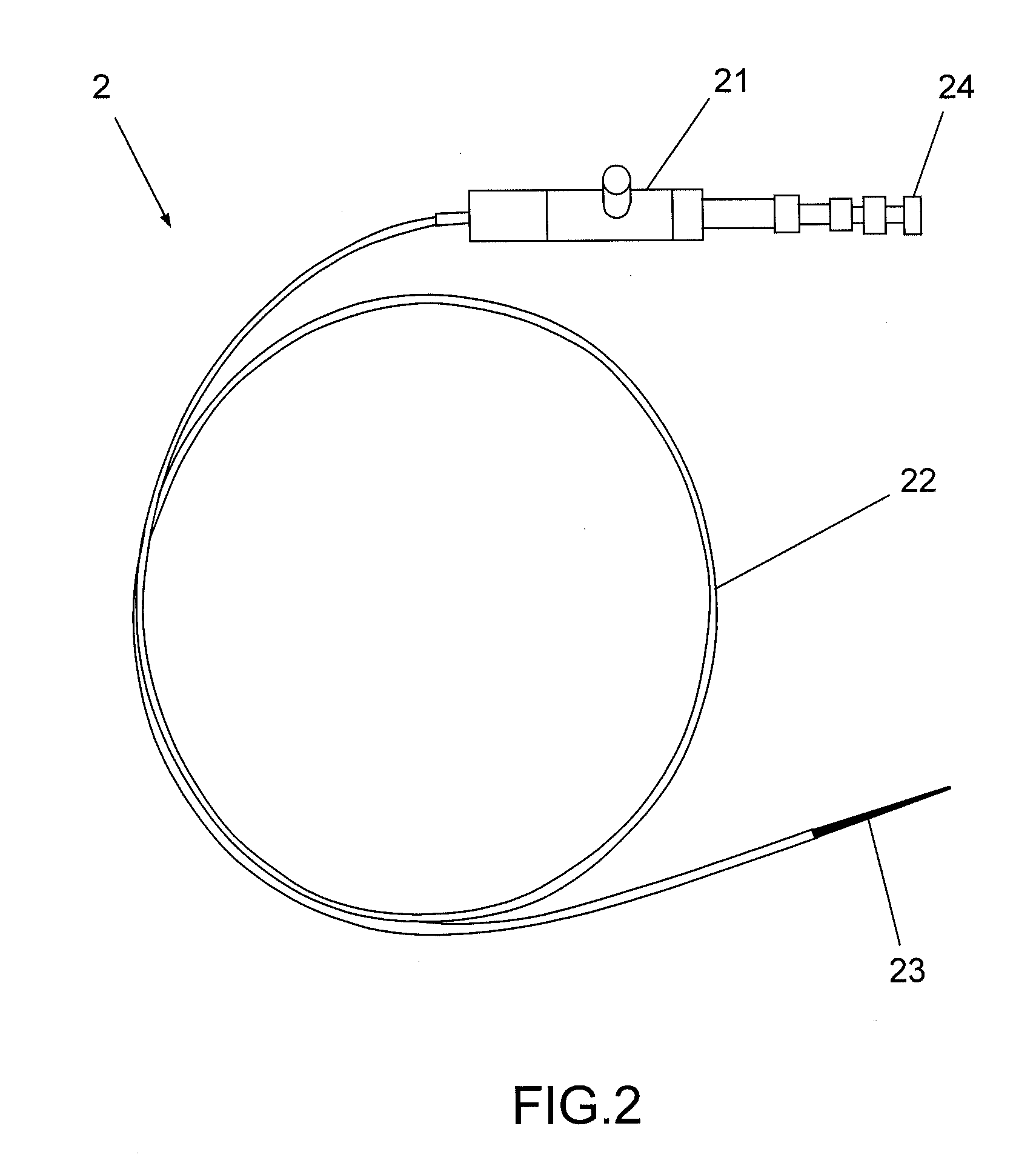Method, an optical probe and a confocal microscopy system for inspecting a solid organ
a confocal microscopy and optical probe technology, applied in the direction of dianostics using fluorescence emission, sensors, catheters, etc., can solve the problems of inability to accurately diagnose, and inability to perform a diagnosis
- Summary
- Abstract
- Description
- Claims
- Application Information
AI Technical Summary
Benefits of technology
Problems solved by technology
Method used
Image
Examples
Embodiment Construction
[0050]Specific embodiments of the present disclosure will now be described in detail with reference to the accompanying Figures. Like elements in the various Figures may be denoted by like numerals.
[0051]In a method for inspecting solid organs according to the present disclosure, a needle may be introduced in a solid organ of a subject. An optical probe inserted in a lumen of the needle may be brought in contact of a predetermined area of the organ to image the predetermined area. The optical probe may be used together with a confocal microscopy system. Imaging the organ according to this method may enable to obtain microscopic pictures of the predetermined area and may help establishing a diagnosis in real time. The solid organ may be one selected from the group consisting of a pancreas, a liver, a spleen, a lymph node, breast, ovaries, a kidney or a prostate.
[0052]The step of introducing the needle in the solid organ may comprise puncturing the solid organ, preferably with a tip o...
PUM
 Login to View More
Login to View More Abstract
Description
Claims
Application Information
 Login to View More
Login to View More - R&D
- Intellectual Property
- Life Sciences
- Materials
- Tech Scout
- Unparalleled Data Quality
- Higher Quality Content
- 60% Fewer Hallucinations
Browse by: Latest US Patents, China's latest patents, Technical Efficacy Thesaurus, Application Domain, Technology Topic, Popular Technical Reports.
© 2025 PatSnap. All rights reserved.Legal|Privacy policy|Modern Slavery Act Transparency Statement|Sitemap|About US| Contact US: help@patsnap.com



